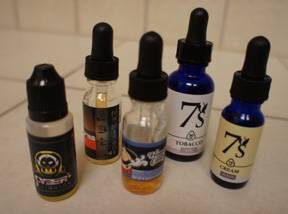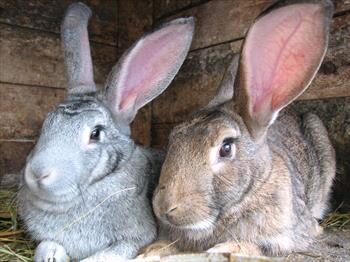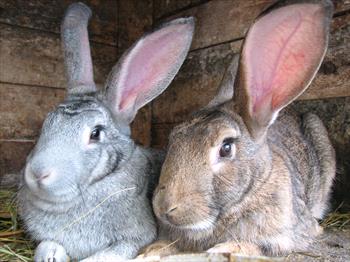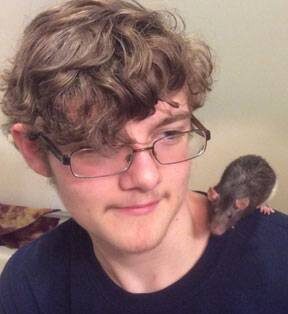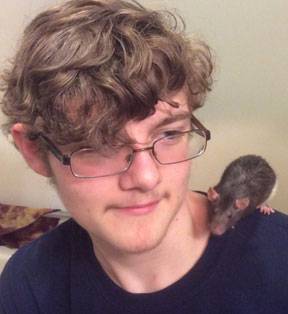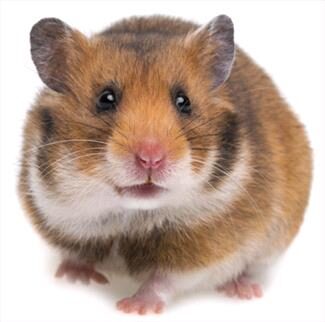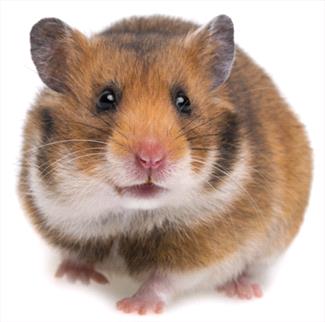Rats have been kept as pets since the late 19th century and have become quite tame and domesticated over time. They’re intelligent and can be taught tricks and interactive games. They have also been used for research as working animals for odor detection, for landmine and tuberculosis detection, raised for food, and are revered in some cultures.
In others, they’re associated with zoonotic disease and are most renowned for being carriers of the bubonic plague, or Black Death.
Wild rats are known to carry pathogens including leptospirosis, toxoplasmosis, Yersinia, and Campylobacter in addition to other conditions. Fortunately, zoonotic disease transmission from pet rats is uncommon.
Despite those different perceptions, rats are quiet and easy to care for, have minimal odor, and are affectionate and friendly animals. With adult supervision, they make excellent pets for children. However, they’re not maintenance free and bringing a pet rat into your home comes with a commitment to provide a large enough cage; time to regularly clean and launder the cage accessories; daily social time, and a high-quality diet.
As pets, with care and attention, rats are gentle, calm, mild mannered, and rarely bite. Although short lived, they are appropriate first pets for young families providing that there is always adult supervision. The most common rat kept as a pet is a domesticated brown rat known as the fancy rat. Over time, breeding has resulted in a variety of different coat colors and types, and fancy rat breeders and clubs are common.
Also, particularly when the rat is to be a pet for a child, mature animals are less likely to explore the world with their mouths; in other words, they tend to be a little less nippy, and are often not quite as fast moving, and therefore, a little easier to handle. On the downside, animals coming from a previous home may come with bad habits including poor dietary preferences, and some retraining may be necessary.
Rats are social animals living in groups in the wild. They appear to derive great enjoyment from social interactions with one another as well as with humans and appear most content when housed in small groups.
Habitat
Unfortunately, many of the basic husbandry needs of rats are overlooked, harkening back to the days of small plastic hamster cages with tubes, wood cedar bedding and food bowls filled with seed and dried fruit. Sadly, this traditional care has led to countless diseases in our pet rats over the years and resulted in significant suffering and pet mortality. In my practice, we spend a generous amount of time counseling our rodent owners on proper husbandry and care of their animals. This hopefully helps not only the animal at hand but generations of pets that these owners may eventually have.
Habitat size must be increased to accommodate group size, but even an enclosure housing a pair of rats can result in a content rat family without requiring too much room. Rats will sometimes exhibit aggressive behavior towards one another, particularly when originally introduced. However, a bonded pair will sleep together, play together, wrestle, groom one another, have squabbles, and develop a variety of communication skills.
Without good basic care, rat health is a house of cards that will easily be upset with even the most minor of infections.
Rats need a significant amount of room to play and be active within a cage environment in addition to being allowed to have regular out-of-cage playtime. A minimum cage size for a single rat should be 8 cubic feet, such as a 2 x 2 x 2-foot cage. Multiple rats will need more space in order to be comfortable. Rats enjoy multi-story cages with ramps and complete floors, allowing them to climb and play with minimal risk of falling.
Cages should not be plastic or glass, both of which significantly limit ventilation and may contribute to respiratory tract infections. I prefer wire mesh cages that have been covered with soft bedding such as fleece blankets, old clothing, and customized bedding to fit the cage.
This helps prevent the feet from injury on the wire bottom of the cage, and allows the rat to create a comfortable nesting area. Solid floors are ideal, if available.
There should be multiple sleeping areas including enclosed sleep boxes, hammocks, and soft, blanketed material. Many rats will readily litter train and each story of the cage should have a corner box available for them. The litter boxes or cage base should be covered with paper-based recycled bedding such as CareFRESH bedding. Avoid wood-based and scented bedding as they can contribute to respiratory disease as well as elevate liver enzymes.
A rat cage that is kept clean will not have a strong odor, and if you feel the need to have scented bedding, this is a sign that the cage is likely not kept clean enough. Bedding should be washed at least weekly and more often if there are multiple rats. Boxes are best changed daily and the remainder of the cage spot cleaned as needed. Rats in general are very clean creatures and will thrive in a clean environment.
As we have discussed briefly, rats are social creatures. Not only do they bond with their human owners, but they also establish a complex and rich series of community relationships and behaviors. Although rats are frequently kept as singleton pets, they are likely to be more content and enriched when living in small groups. A bonded community of three to four individuals generally appears to be ideal. This can be either as single-sex environment or a mixed group of altered animals.
When intact animals are housed together, particularly males, they need enough room to prevent fighting and establishing territorial aggression. Some dominance is to be expected in any group of animals, but in general most rats appear to settle their disputes amicably.
Wrestling and grooming behavior within a group is common and should not be mistaken as aggression. Adequate space is a solution to many inter-rat problems, and so when in doubt, provide the largest cage you can and as much out-of-cage social interaction time as possible.
What to Feed
Rats are nutritional omnivores and can eat and digest a wide variety of foods. Unfortunately for the rats, pet food manufacturers have taken advantage of this fact to provide a wide variety of foods that are appealing but do not provide the necessary nutritional basics; in other words, it’s junk food.
In general, the staple of a rat’s diet should be made up of high-quality pelleted food such as that made by Mazuri. These foods are most commonly referred to as ‘rat block’ or ‘rodent block’. They should not contain any colored pellets, nuts, dried fruits or vegetables, or seed bits.
Rat block should comprise 80% to 90% of the overall caloric intake for an animal. Many rats are fed some variety of seed, dried fruit, and nut-based diets. Unfortunately, these diets are often high in fat, and rats can become obese even when eating a healthier diet. Over time, these diets can lead to organ disease, a weakened immune system, skin disease, and obesity.
The higher quality rat food brands have been formulated to completely meet the rat’s nutritional needs with no significant excesses or deficiencies, and they do not allow the rat to pick and choose its favorite diet components. Although not visually appealing to us and perhaps not as popular as the seed-based junk foods marketed for rats, these pelleted diets are vastly superior nutritionally, the equivalent of a salad instead of candy.
Have a thorough diet review with your veterinarian so you can help prevent illnesses wherever possible. The risk of both kidney disease and obesity-related diseases can be reduced strictly by calorie and protein control alone.
Not only is the content of the diet important in the health and wellbeing of the pet rat, but the amount is also important. Rats who can eat whenever they want have been shown to have higher incidences of mammary, pituitary and pancreatic cancers. Moderate caloric restriction has been demonstrated to reduce the likelihood of cancer, particularly with tumors that have an endocrine influence. Therefore, a moderately restricted, high-quality diet yields multifactorial benefits in the health of pet rats.
A variety of healthy treats and supplements should be offered to the pet rat. When you begin to offer these extras, do so slowly in order to avoid digestive upset. Healthy fresh foods that can be given include small amounts of cooked beans, peas, corn, dry or cooked pasta, squash, carrots, green leafy vegetables, breads, and small amounts of other fresh fruits and vegetables. Occasional snacks of nuts, lean meats, and eggs are also appropriate, but rats are sensitive to excesses of proteins in their diet and high-protein snacks should be kept to the occasional treat only.
Portions should be appropriate for the size of the rat: a pinky fingernail-size portion of food is similar to an entire plate of food for an adult human. Although rats adore sugary and salty treats, avoid them.
Basically, if it would be considered a healthy snack for a human, it will likely also be a healthy snack for a rat as long as portion control is appropriate. Rats are truly an example of ‘you are what you eat.’ With their already too-short life spans and a tendency towards disease, we owe it to them to provide as much of a nutritional head start as we possibly can.
Health
Despite the emphasis on overall husbandry and preventative medical care, the realistic truth is that the vast majority of rats seen by veterinarians are pretty sick. That being said, many of the conditions our little rat friends are prone to are controllable and some are even curable. They are surprisingly sturdy patients and can tolerate a wide variety of both medical and surgical procedures.
Although rats in general are hardy little creatures, they are certainly prone to a number of conditions. Some of these, such as renal disease and obesity-related conditions, can be prevented with good husbandry and diet. Others, such as tumors and respiratory diseases, are a combination of genetic predisposition, exposure, and environmental causes. Even though an animal may have a large and dramatic tumor, there are often options to improve the animal’s quality of life even when there is no cure.
Mammary adenomas are the most common mammary tumors found in rats and can be seen in males and females. Spaying can significantly reduce their occurrence in females. Although they have been reported in rats of all ages, they are most common in animals older than 18 months of age. Some of these adenomas can be extremely large and carry a rich blood supply. Fortunately, this completely benign and encapsulated mass is significantly more common than its cousin, the mammary adenocarcinoma. Mammary adenomas can be deceptive since rats are essentially walking mammary glands. There is mammary tissue from the chin to the base of their tail. Any skin mass could potentially be a mammary adenoma.
Fortunately, rats do very well when having these tumors surgically removed. As a rule, fibroadenomas tend to remain localized and are not invasive. They can, however, be extremely large, sometimes approaching the size of the rat itself. Tumors of this size can be a surgical challenge since essentially you are removing the rat from the tumor. If the tumor is not completely removed, they will often regrow. Still, most rats will benefit from debulking large tumors.
Spaying just as you would any dog or cat at a young age and then restricting calories or not allowing a free-fed diet can go a long way toward preventing mammary fibroadenomas.
Mammary tumors are dependent on estrogen and prolactin concentrations and spaying markedly reduces their incidence. Early age spaying may virtually eliminate the incidence of later development of mammary masses, and even spaying at the time the tumor develops may prevent a recurrence.
Free-fed rats have a higher incidence of pancreatic, mammary, and pituitary tumors than rats fed in identical diets with moderate quantities. High-caloric intake also enhances tumor growth and the endocrine-based tumors, particularly mammary masses and pituitary masses, appear to be the most influenced by caloric intake. Therefore, feeding a calorically restricted, high-quality diet is crucial to preventing mammary masses and their recurrence. Practicing preventative medicine makes a positive difference.
Fortunately, when it comes to fibroadenomas, we have good treatments to help most pets. Rats make surprisingly hardy surgical candidates. They do, however, tend to self-mutilate their incisions. Surgery is the easy part of treatment. It’s the two weeks after the surgery that’s the hardest part. When we make it to suture removal, I consider the treatment to have been a success.
Pituitary masses are relatively common in rats and appear most frequently in female animals between 13 and 24 months of age. These are occasionally seen in male animals or younger animals but are much more frequently seen in females. Even in the normal animal, the female has a larger and heavier pituitary gland. Females that have been spayed don’t have pituitary masses as often as rats who are intact. Signs are extremely variable and often continue to change. Most commonly, however, these tumors are benign; they rarely metastasize and are a relatively slow-growing tumor. A number of factors influence pituitary tumors including age, genetics, hormonal status, spaying and neutering, injury, infections and so on. Unfortunately, the location of the tumor and the pituitary gland makes surgical removal a poor option. However, targeting the symptoms of most clinical concern for the patient can lead to significant palliation of the clinical signs and improve quality of life for the patient.
Respiratory diseases are one of the most common reasons pet rats to see the veterinarian. Infections are endemic in the rat population and many animals are infected at the time of purchase or adoption by the owner. Periods of immunosuppression, stress, or concurrent infections can result in the sudden appearance of clinical signs. There are several common underlying causes for infection, including bacterial, viral, fungal, and parasitic diseases. Infections frequently have significant and severe secondary results including pneumonia, abscesses, empyema, pleural effusion, and bacteremia. Non-infectious causes of pneumonia, such as aspiration pneumonia or chemical irritants resulting in inflammation and pneumonia, are seen.
Of all the reasons for pneumonia in rats, the most common is the bacteria Mycoplasma pulmonis. Mycoplasma differs from the most common bacteria because they lack cell walls but are enclosed by a lipid protein cell membrane. They’re not considered to be either gram-positive or gram-negative. Because of these facts, some antibiotics such as penicillin and cephalosporins don’t against mycoplasmas.
Clinical signs vary depending on the virulence of the strain involved, the site of infection, the age of the animal, and concurrent disease. For patients experiencing upper respiratory tract disease, clinical signs are generally mild and include sneezing, snuffling, squinting, and porphyrin staining around the eyes and nose. In fact, many owners take their rat to the doctor thinking that there’s eye disease, complaining that the animal is squinting and bleeding from the eyes. These rats may also have signs associated with an inner ear infection including head tilts, rolling, face and ear rubbing, and ear pain. Patients may also have signs of lower respiratory disease including rattling or moist breath sounds, labored breathing, chattering, coughing, and gasping. These animals are often clinically ill and may appear lethargic and/or have a poor appetite, poor coat, weight loss, hunched posture, and grumpy behavior. Some rats don’t have any signs at all. Pups may be infected before birth.
At this time, there is no cure for mycoplasmosis, and it requires long-term management. At best, we try to minimize the clinical signs, reduce concurrent diseases, improve husbandry, and look for the overall quality of life of the patient.


